Why Your White Shirts Get Yellow Armpit Stains (And How to Actually Fix It)
We’ve all been there. You grab your favorite white t-shirt or a crisp dress shirt, and there it is: that stubborn, yellowed stain in the underarm. It’s frustrating, right? You feel like you’ve tried everything—hot water, heavy-duty detergents, even a splash of bleach—but the stain just laughs back at you, sometimes looking even worse than before. Too often, a perfectly good shirt gets demoted to the donation pile or buried in the back of the closet.
In this article
But here’s the secret: those stains aren’t a life sentence for your clothes. The key isn’t scrubbing harder; it’s about understanding what you’re up against. Once you know what caused the stain, you can use a little bit of simple chemistry to break it down. To be clear, this isn’t a magical five-minute fix. Real stain removal takes a bit of patience, but it’s a process that can absolutely save your favorite garments. I’m going to walk you through the exact methods the pros use, with simple stuff you probably already have in your kitchen.
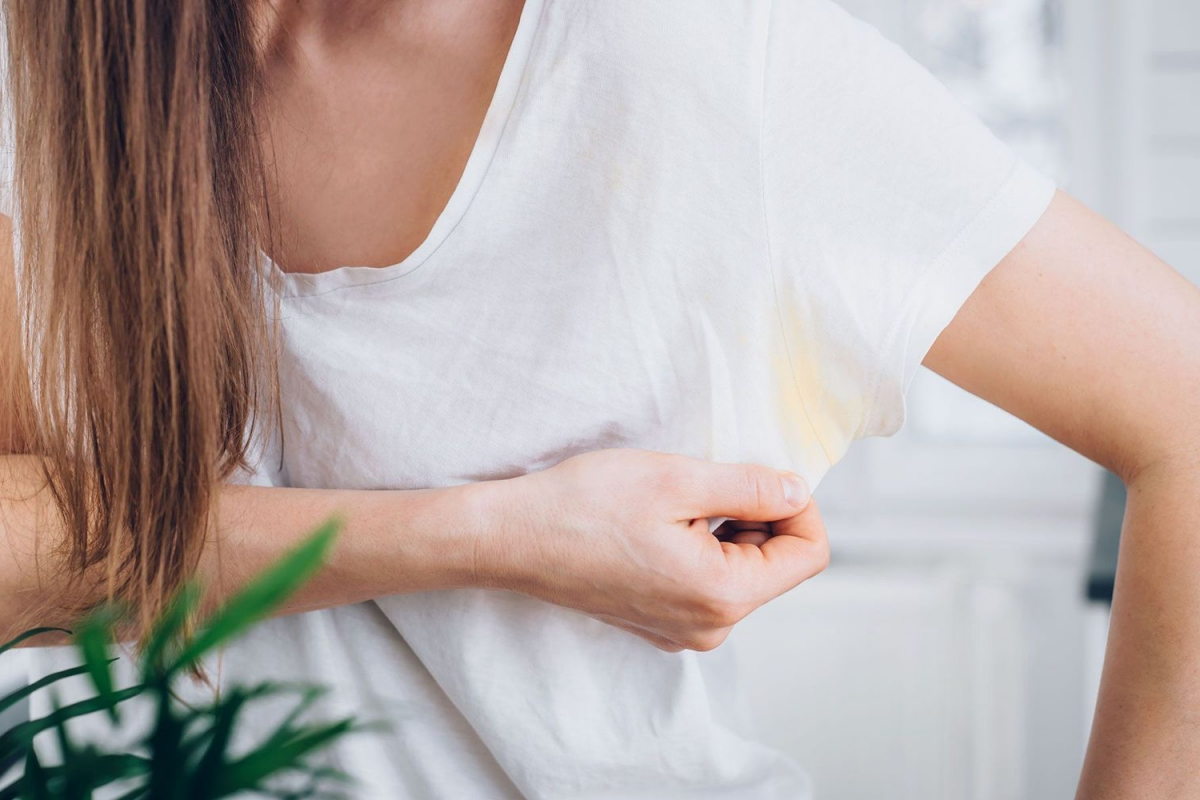
First, Why Does This Even Happen?
Let’s get one thing straight: that yellow stain isn’t just dried sweat. If it were, a normal wash cycle would take care of it. The real issue is a chemical reaction that’s happening right in the fabric of your shirt.
Your sweat itself is mostly water with some proteins and salts. The true villain here is the aluminum compound found in most antiperspirants. Go ahead, grab your antiperspirant right now and check the active ingredients. See something like Aluminum Zirconium or Aluminum Chlorohydrate? That’s the culprit! While these ingredients are great at blocking sweat, they build up in the fabric fibers over time.
When the aluminum from your antiperspirant mixes with the proteins in your sweat, they create a tough, discolored residue that latches onto cotton fibers for dear life. And when you toss that shirt into a hot wash or a hot dryer, the heat essentially bakes that mixture into the fabric, setting the stain permanently. That’s why a shirt can look fine out of the wash, only to have the yellow magically appear after it’s been dried or ironed. So, what we’re doing here isn’t just cleaning—we’re reversing a chemical reaction.
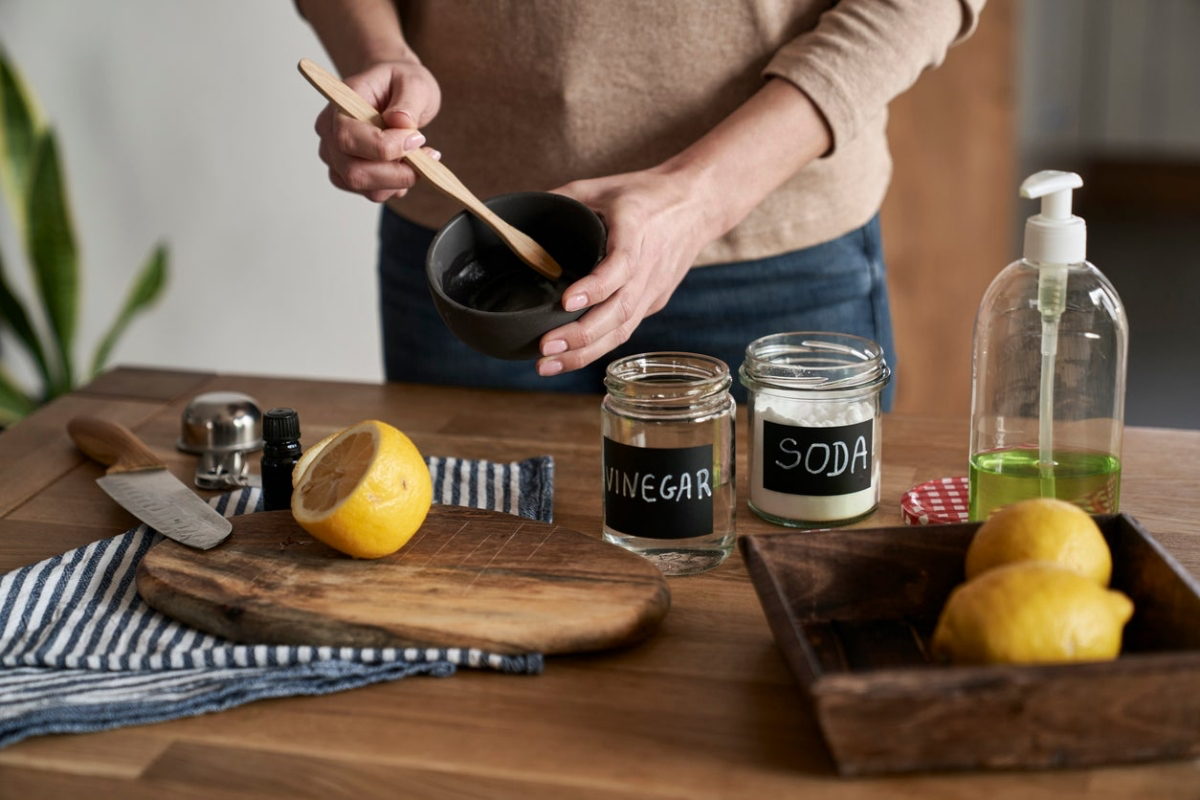
Your Stain-Fighting Toolkit (and a Little Safety)
Before you jump in, let’s get your gear ready. Rushing this part is how clothes get accidentally ruined. Taking a couple of minutes to get organized makes all the difference.
Here’s what you’ll need:
- Glass or Plastic Bowls: Never use metal bowls for this. Ingredients like hydrogen peroxide or vinegar can react with metal, and we don’t want any unexpected science experiments.
- A Soft-Bristled Brush: An old, clean toothbrush is absolutely perfect. You want to work the solution into the fibers, not scrub them into a fuzzy mess.
- A Spray Bottle (Optional but handy): Great for applying your cleaning solution evenly without totally drenching the shirt.
- Protective Gloves: Even though these are household ingredients, things like vinegar and peroxide can irritate your skin. It’s a good habit to get into.
The best part? This entire professional-grade cleaning kit will cost you less than $10 at the grocery store or Target. You really can’t beat that.
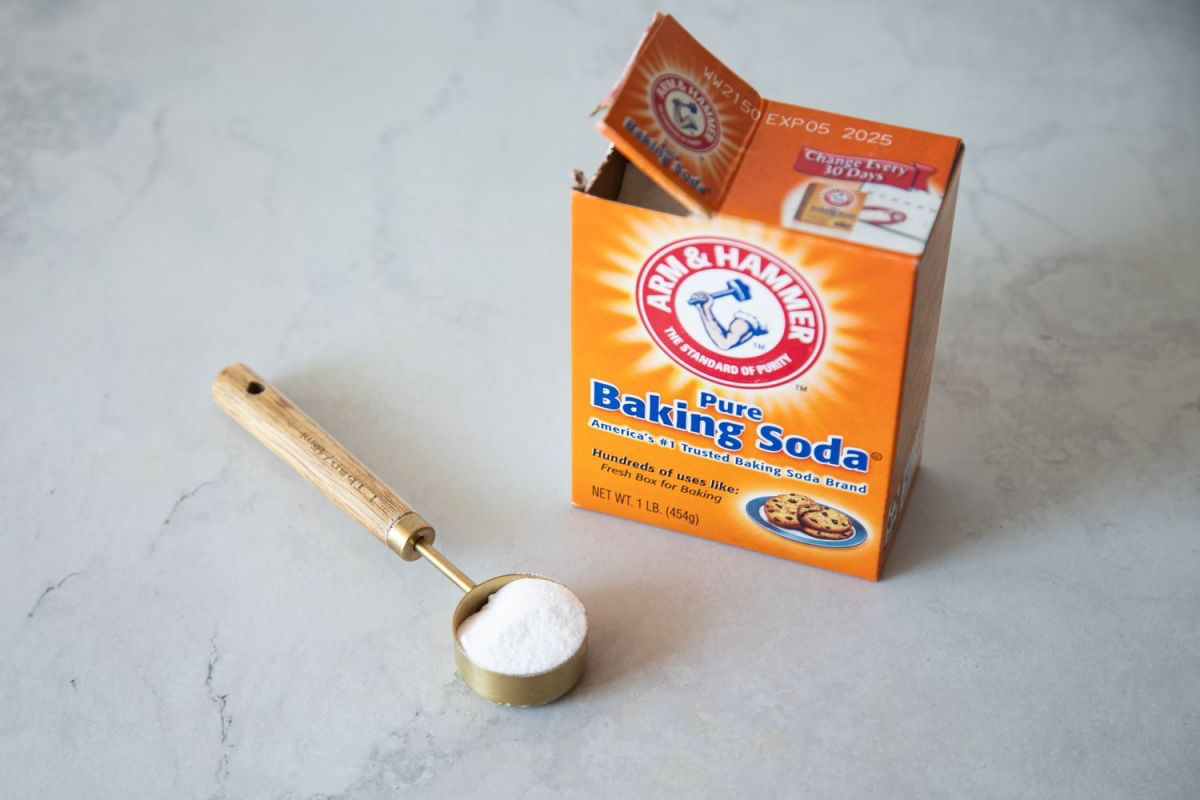
Heads Up! A Critical Safety Warning
Okay, this is important. NEVER mix cleaning chemicals randomly. The number one rule in any professional shop is to avoid mixing chlorine bleach with acids (like vinegar) or ammonia. These combinations create toxic gas. Stick to the simple, one-at-a-time ingredients I’m about to show you, and you’ll be perfectly safe. It’s also a good idea to work in a well-ventilated area.
And please, always check the garment’s care label first. That little tag is your instruction manual. If it says “Dry Clean Only,” believe it. While you can sometimes spot-clean those items, a structured blazer or a silk blouse should go straight to a professional. The methods below are designed for sturdy cotton and poly-cotton blends—the stuff most of our t-shirts and dress shirts are made of.
The Pro Method: A Step-by-Step Guide for Cotton Shirts
For a standard white cotton shirt with a noticeable yellow stain, one product usually isn’t enough. We need to attack the different parts of the stain in sequence. Think of it as a one-two-three punch.
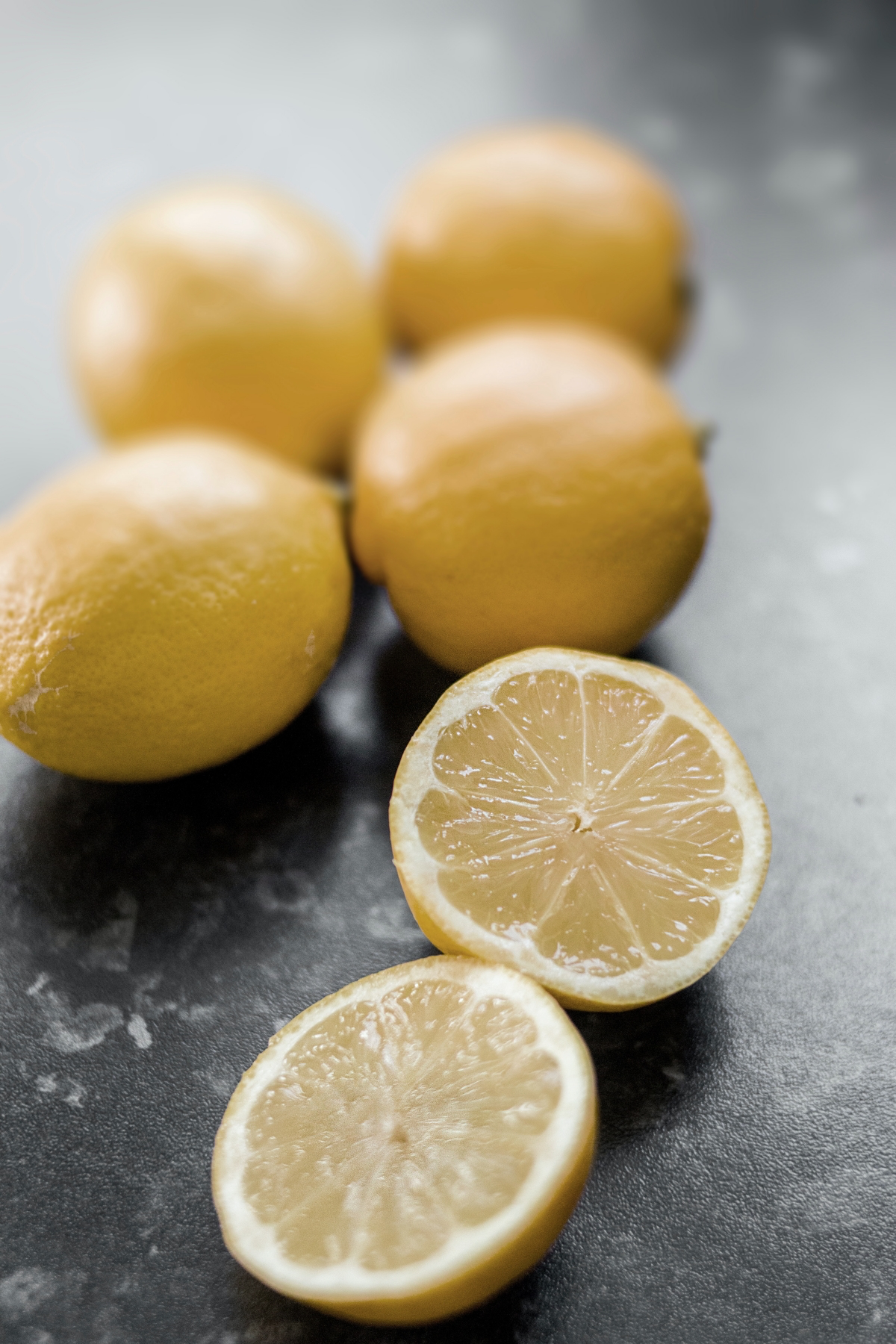
Step 1: The Acid Soak (White Vinegar)
First, we target the aluminum buildup. The acetic acid in plain old white vinegar is fantastic for dissolving these mineral deposits.
Mix one part distilled white vinegar with two parts lukewarm water in your plastic bowl. Don’t use hot water, which can set the protein part of the stain. Dunk the stained area of the shirt into the solution and let it soak for at least 30 minutes. For really tough, crusty stains, I’ve let them go for up to two hours.
Quick Tip: Before you even start, feel the stained area. It’s probably stiff, right? After this vinegar soak, you should already feel it getting softer. That’s your first sign that it’s working!
Step 2: The Alkaline Paste (Baking Soda)
Now we tackle the organic stuff—the oils and proteins. Baking soda is a mild alkali that helps break them down, and it acts as a super-gentle abrasive.
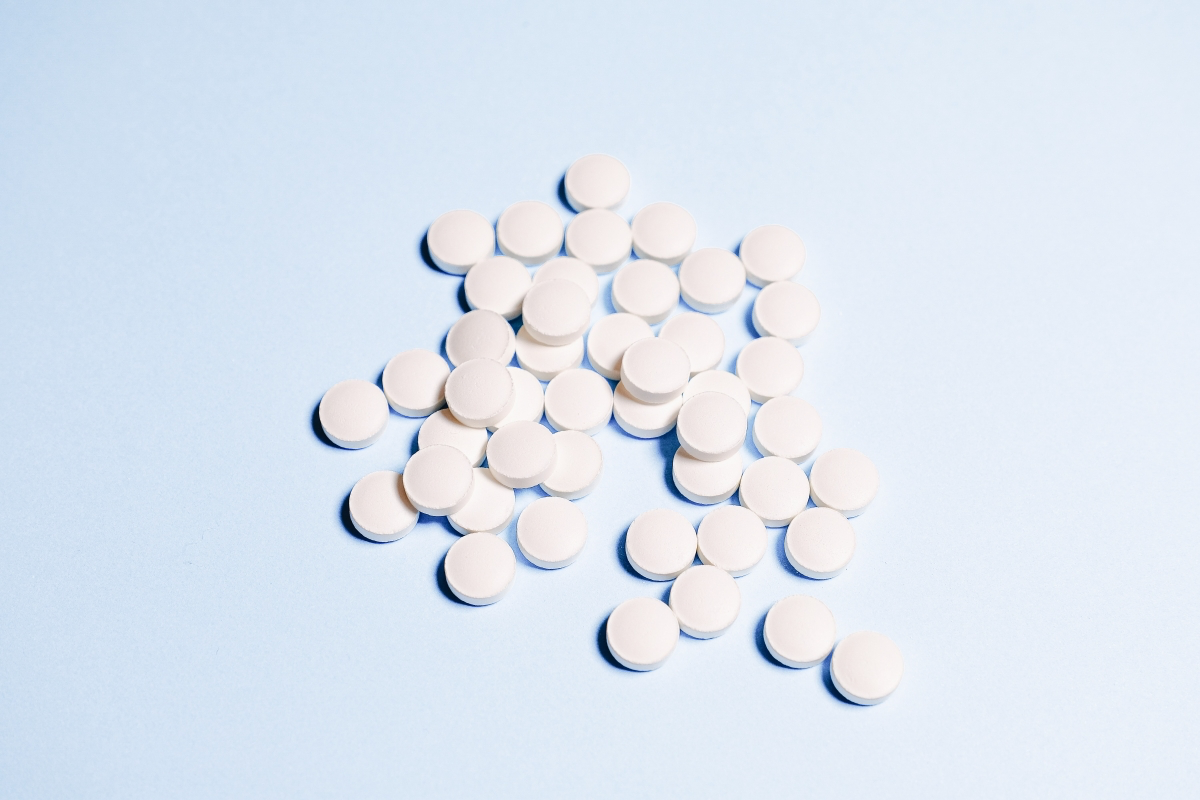
After the soak, gently squeeze out the excess vinegar solution (don’t rinse it!). Lay the damp area flat and sprinkle on a generous layer of baking soda—about 2-3 tablespoons should do it, enough to completely cover the stain. Add a few drops of water to create a paste with the consistency of thick toothpaste. You’ll see some fizzing as the acid and base react, which helps physically lift the gunk out of the fibers. Let that paste sit for another 30 minutes, then gently scrub the area with your soft brush in a circular motion.
Step 3: The Oxidizing Boost (Hydrogen Peroxide)
This is the final blow. Hydrogen peroxide is an oxidizer that chemically breaks the bonds of the remaining color molecules. It’s a type of bleach, but it’s much safer for cotton than chlorine bleach.
A Strong Caution: Use standard 3% hydrogen peroxide, the kind you get in a brown bottle at any pharmacy. And this step is for SOLID WHITE garments only, as it can lift color from dyed fabrics. When in doubt, test it on a hidden seam first.
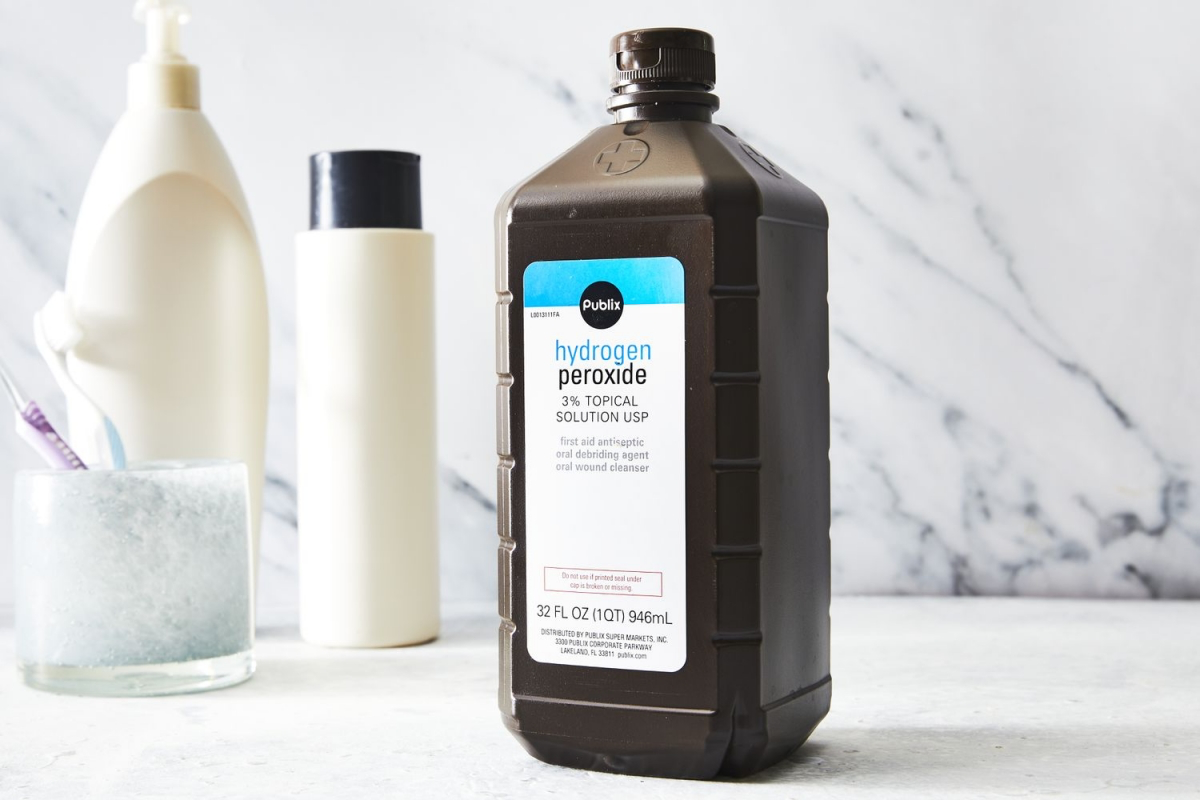
Pour a small amount of the 3% hydrogen peroxide directly onto the baking soda paste. It will foam up again—another good sign! Let it work its magic for about 15-30 minutes.
By the way: Make sure your peroxide is relatively fresh. If that bottle has been sitting in your cabinet for a couple of years, it has likely lost its potency and won’t do much. It breaks down into plain water over time.
Step 4: The Final Wash & The Moment of Truth
Now, launder the shirt as you normally would, but use a cool or warm water setting—NEVER hot. Before you even think about putting it in the dryer, check your work. The heat from a dryer is your worst enemy until you know the stain is 100% gone.
Pro Tip: How do you tell if the stain is gone when the shirt is wet? Hold the damp underarm area up to a bright light. If the fabric looks uniform in color and texture, you’ve won! If you still see a shadowy, slightly denser-looking patch, the residue is still there. Don’t dry it! Just repeat the process. Once it’s fully gone, air-drying the shirt in the sun can add a final, gentle bleaching touch.
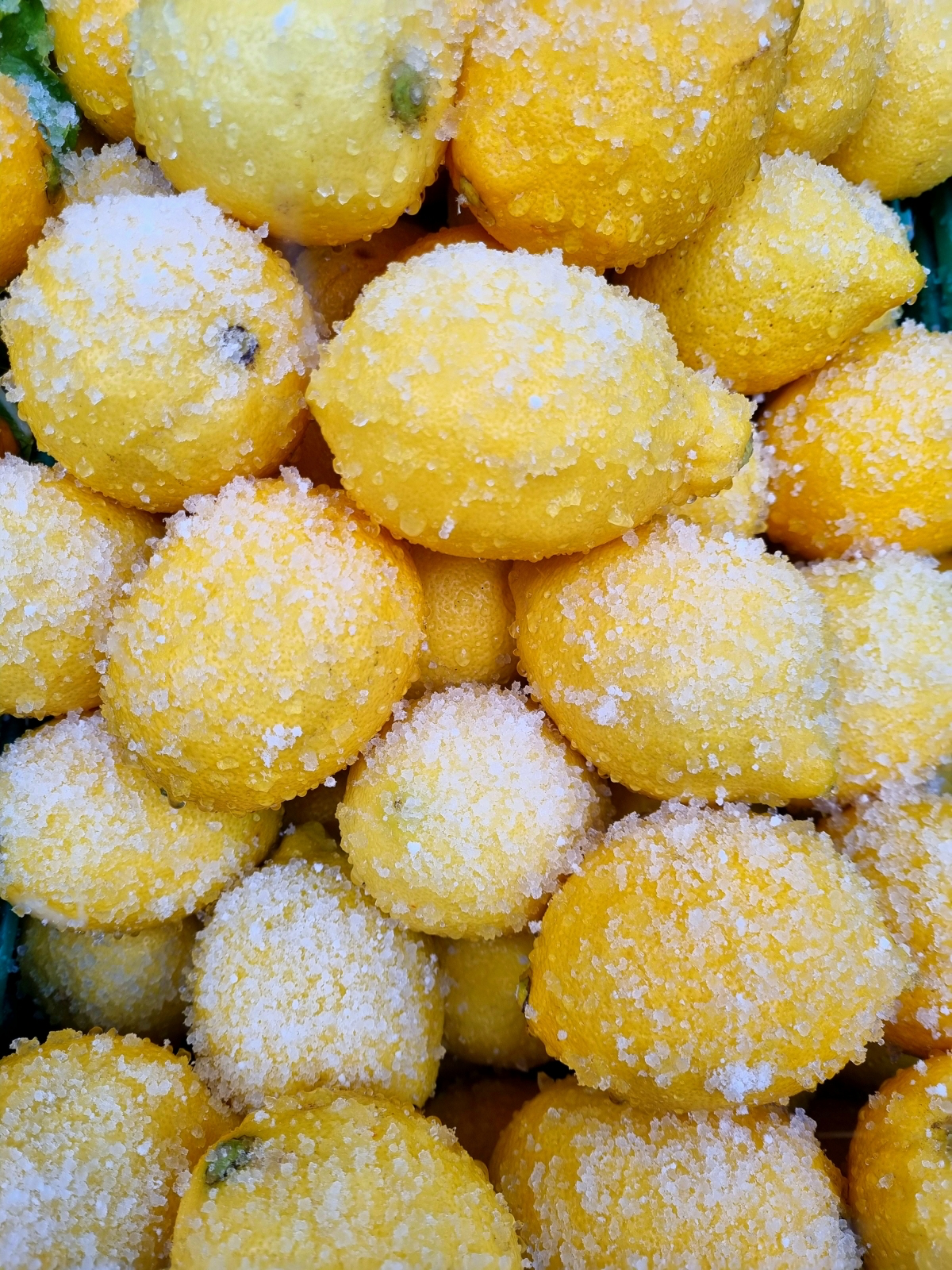
Quicker Fixes for Lighter Stains
If your stain is brand new or just a faint yellow, you might not need the full multi-step treatment. Here are a couple of simpler options:
- Lemon Juice & Salt: This is a classic trick for a reason. Lemon juice has citric acid (similar to vinegar) and salt is a gentle abrasive. Make a paste, scrub it in, and then lay the garment in direct sunlight for a few hours. The UV rays activate the lemon juice for a natural bleaching effect. It’s great for light yellowing but use it sparingly, as too much sun can weaken cotton over time.
- Crushed Aspirin: Sounds like an old wives’ tale, but it’s backed by science. Aspirin is acetylsalicylic acid, which helps break down the compounds in sweat stains. Crush two uncoated aspirin tablets, dissolve them in half a cup of warm water to make a paste, apply it to the stain for a couple of hours, and then wash. It’s surprisingly effective on newer stains.
Oh, and people often ask if they can use apple cider vinegar. I’d stick to distilled white vinegar. ACV has a natural color that could potentially cause a faint stain of its own, and we’re trying to solve problems here, not create new ones!
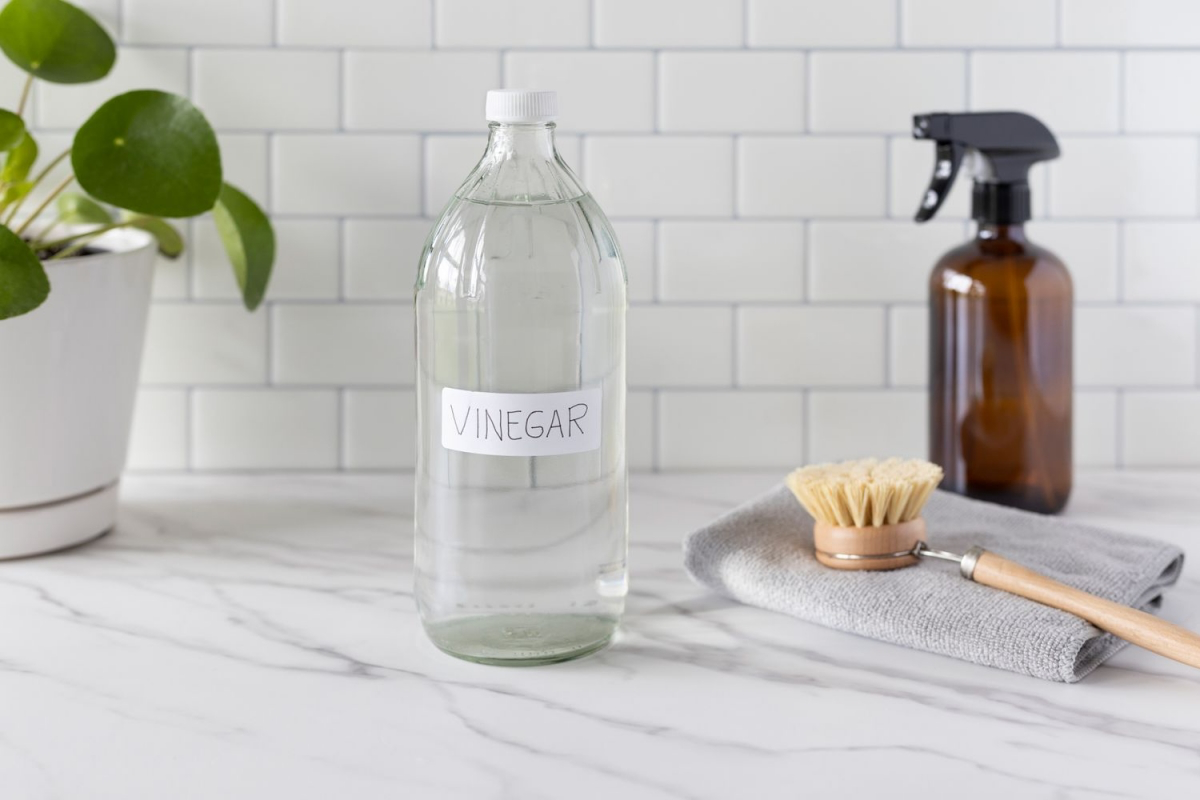
A Word on Delicate Fabrics
Everything we’ve just talked about is for robust fabrics like cotton. Delicates are a whole different ballgame. Wool and silk are protein fibers themselves, and harsh cleaners can literally dissolve them, leaving holes. For these, I honestly recommend taking them to a professional dry cleaner. It’s just not worth the risk of ruining an expensive or beloved item.
Fabrics like rayon and viscose are also tricky because they’re very weak when wet. If you must treat them, be incredibly gentle—press the cleaning solution in with a cloth, don’t rub or scrub.
Prevention Is Always the Best Medicine
Honestly, the easiest way to deal with these stains is to stop them from forming in the first place. A few simple habits can make a huge difference:
- Wash After Every Wear: This is the big one. Even if a shirt seems clean, the invisible residue is there. Washing it promptly prevents buildup.
- Let Your Antiperspirant Dry: Give it a few minutes to dry completely before you put on your shirt. This minimizes how much product transfers to the fabric.
- Consider an Aluminum-Free Deodorant: If this is a constant problem for you, switching products might be the answer. Deodorants control odor, while antiperspirants block sweat. An aluminum-free option won’t cause these specific chemical stains.
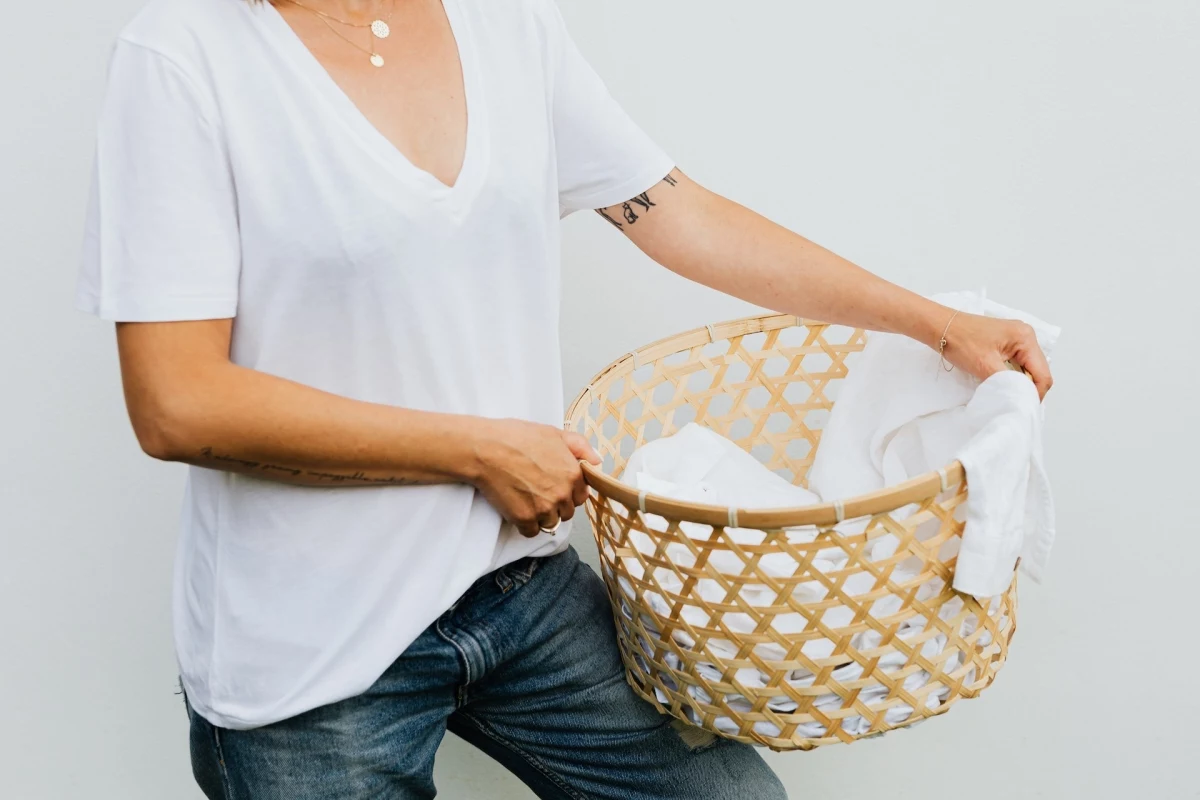
Knowing When to Call a Professional
Empowering yourself to care for your clothes is great, but knowing your limits is just as important. It’s time to see a pro if:
- The garment is expensive or has huge sentimental value.
- The fabric is silk, wool, velvet, or something else you’re unsure about.
- The item has a lot of structure, like a blazer with linings and padding.
- You’ve carefully tried the home methods and the stain won’t budge.
A good dry cleaner has specialized solvents and equipment that can succeed where household remedies fail. Think of it as calling in the specialists. By being patient and using a little chemistry, you’ll be shocked at what you can rescue from the back of your closet.
Inspirational Gallery
The Deodorant Switch: The easiest fix is prevention. Consider switching to an aluminum-free deodorant. Brands like Native or Schmidt’s use natural ingredients like baking soda and arrowroot powder to absorb moisture and neutralize odor without the aluminum compounds that cause yellowing. It’s a simple change that tackles the problem at its source.
- Give your deodorant at least a minute to dry completely before you put on your shirt.
- Apply a thinner layer; more isn’t necessarily more effective and just leads to buildup on the fabric.
- Wash your white shirts after every single wear, even if they look clean, to prevent residue from setting in.
Warning: Never use chlorine bleach on sweat stains! The bleach has a chemical reaction with the proteins in sweat, which can actually intensify the yellowing and make the stain permanent.
What about the lingering smell, not just the stain?
Sometimes the discoloration is gone, but a faint odor remains. The solution is often antibacterial. A pre-soak in a solution of one part white vinegar and four parts cool water for 30 minutes can neutralize the odor-causing bacteria that have embedded in the fibers before you proceed with your stain removal process.
Don’t underestimate the power of the sun. After treating and washing your white shirt, let it air dry outside on a sunny day. The sun’s ultraviolet rays have a natural bleaching effect that can help brighten the fabric and eliminate any remaining traces of yellowing without the use of harsh chemicals. It’s free, effective, and gentle on your clothes.
For stubborn, set-in stains: Create a paste using three parts baking soda and one part water. Rub this paste into the yellowed area with a soft-bristled brush (an old toothbrush works perfectly) and let it sit for at least an hour, or even overnight for tough cases. The gentle abrasive action of the baking soda helps lift the stain out of the fibers before you wash the garment as usual.
Hydrogen Peroxide vs. OxiClean:
Hydrogen Peroxide (3%): A fantastic and inexpensive stain fighter. When mixed with dish soap, it creates a powerful lifting agent for the specific protein/aluminum stain. Best for targeted spot treatments.
OxiClean (or similar oxygen bleach): Excellent for an all-over brightening soak. It releases oxygen bubbles that break down a wide variety of stains and dinginess. Ideal if the whole shirt needs a refresh, not just the underarms.
For armpit stains, start with a targeted peroxide treatment, then consider an OxiClean soak for overall whiteness.
- Brighter, whiter appearance overall.
- Softer fabric feel by removing mineral buildup.
- Complete neutralization of stubborn odors.
The secret? A simple laundry booster you probably own: Borax. Adding half a cup to your wash cycle helps soften the water, allowing your detergent to work much more effectively on tough stains and general dinginess.
According to textile chemists, the bond between aluminum compounds and cotton fibers is strengthened significantly by heat.
This is why you should never iron a stained shirt or put it in a hot dryer. The heat will essentially
The fabric itself makes a difference. Natural fibers like 100% cotton are very absorbent, which makes them comfortable but also prone to soaking up sweat and deodorant. Synthetic performance fabrics, like those used in athletic wear, are designed to wick moisture away, which can reduce staining. However, they are also notorious for trapping odor-causing bacteria, requiring different cleaning techniques. For a classic white shirt, a high-quality Pima or Egyptian cotton offers breathability that can help minimize the problem.










